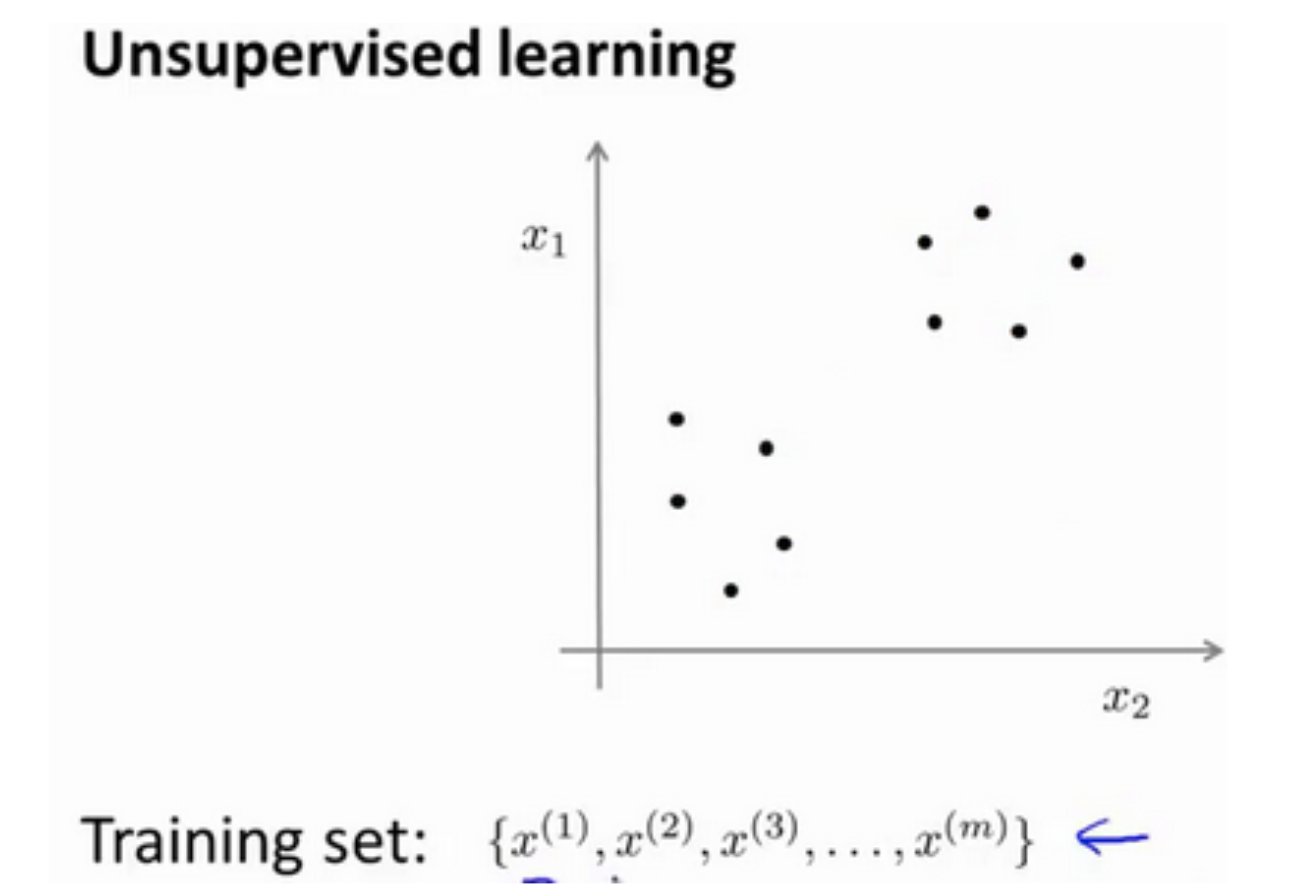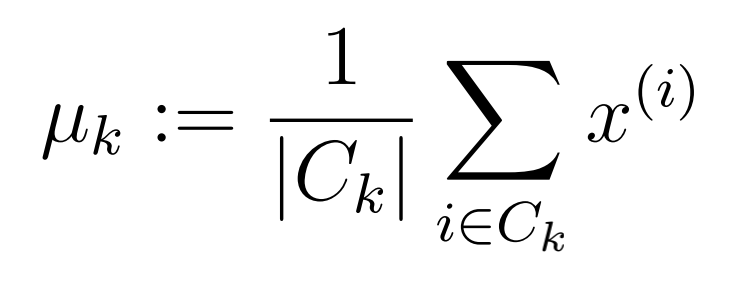Cluster notes
聚类
简单记录一下聚类。
无监督学习:训练集没有标签,聚类就是一个典型的无监督学习应用。

聚类算法可以把上图分类两个簇。
K-Means 算法
K-Means 是最普及的聚类算法,算法接受一个未标记的数据集,然后将数据聚类成不同的组。K-Means算法的思想很简单,对于给定的样本集,按照样本之间的距离大小,将样本集划分为K个簇。让簇内的点尽量紧密的连在一起,而让簇间的距离尽量的大。
例如我们想将数据分成 k 个分组,k-means 算法首先选择 k 个随机点,这 k 个随机点称为 聚类中心(cluster centroids)
每一个聚类中心相当于“分组”的中心,k-means 算法优化目标是最小化所有数据与聚类中心点距离的距离和。
K-means 算法是一个迭代算法,每一次迭代完成两件事情
- 计算每个数据最近的聚类中心,即为聚类中心关联数据(优化目标1)
- 用聚类中心关联的数据点平均分布位置更新该聚类中心 (优化目标2)
k-means 算法优化目标
优化目标(1)

$c^{(i)}$ 是第 i 个样本 $x^{(i)}$ 最近的聚类中心的下标, $\mu_j$ 是第 j 个聚类中心的向量。
优化目标(1) 的目标是找一个 j 使得 $x^{(i)}$ 到该聚类中心 $\mu_j$ 的距离最短(换句话讲,就是找到离 $x^{(i)}$ 最近的聚类中心, 并将该聚类中心的下标对应的下标赋值给 $c^{(i)}$)
通俗点讲,为聚类中心关联数据向量
优化目标(1)的代码实现
1 | |
优化目标(2)

优化目标(2) 的作用是优化聚类中心。 $\mu_k$ 表示聚类中心,$C_k$ 是一个集合,用来记录聚类中心 k 对应的关联数据的集合,$|C_k|$ 是集合中元素的个数。
优化目标(2) 的代码实现
1 | |
随机初始化聚类中心
k-means 结果对于初始的聚类中心选择非常敏感,在运行 k-means 算法之前,我们应该选择随机的聚类中心。一般随机选择 k 个数据点作为聚类中心。多次用随机初始化的聚类中心运行 k-means 算法,选择误差最小的为最优模型。这样可以避免迭代算法达到局部最优解。
本博客所有文章除特别声明外,均采用 CC BY-SA 4.0 协议 ,转载请注明出处!